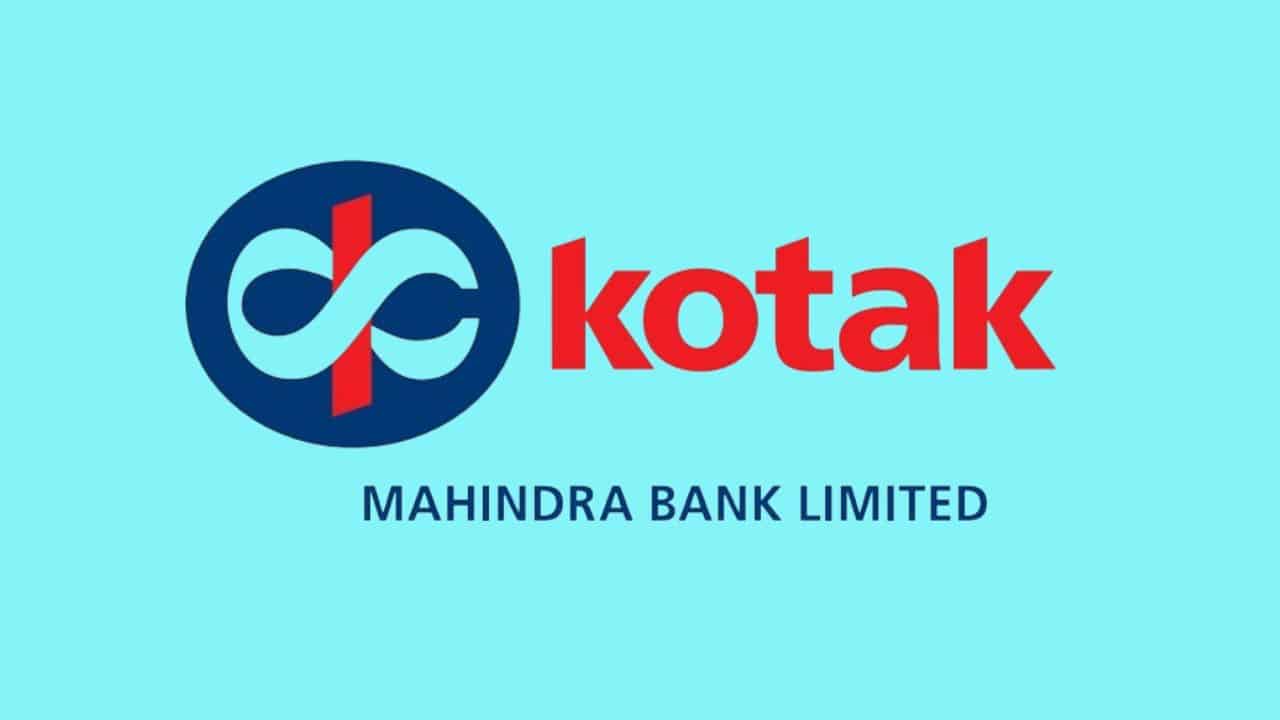One profitable crypto trading strategy is day trading, where traders capitalise on short-term price movements by entering and exiting positions within the same day. This allows for potential gains from market volatility. However, it’s crucial to continuously analyse market trends and use risk management techniques to mitigate potential losses.
Building a Solid Crypto Trading Foundation
Before jumping into trading, it’s crucial to grasp the fundamentals of cryptocurrencies. Start by understanding what cryptocurrencies are and how they work. This includes understanding the underlying technology, notably blockchain, which forms the backbone of most cryptocurrencies. By educating yourself about blockchain, you’ll gain insight into why it’s considered secure and transparent, laying the groundwork for understanding the value and potential of business2.community cryptocurrencies.
Furthermore, familiarise yourself with significant concepts in the crypto space such as decentralised finance (DeFi) and non-fungible tokens (NFTs). DeFi represents a financial system independent of traditional banks and is often associated with lending, borrowing, and trading using blockchain technology. NFTs, on the other hand, are unique digital assets that provide proof of ownership or authenticity of a particular item, usually art or collectibles. These areas are shaping the future of finance and digital ownership, making them essential knowledge for any aspiring cryptocurrency trader.
For instance, understanding DeFi protocols helps you comprehend the various financial services available in the crypto world without relying on traditional institutions. NFTs have gained significant attention due to their potential in revolutionising the art and gaming industries by enabling digital asset ownership and provenance verification.
In addition to these advanced concepts, learning about tokenomics is indispensable for anyone entering the crypto trading domain. Tokenomics encompasses the study of token economics, including factors that influence a cryptocurrency’s supply, demand, and value. As an aspiring trader, analysing tokenomics can help you gauge the sustainability and potential growth of different cryptocurrencies in the market.
To aid in your educational journey, carefully curated resources tailored for beginners can be immensely beneficial. These resources should be designed to provide comprehensive insights into cryptocurrency trading and the associated technologies. These may include detailed guides explaining key concepts, tutorials on using trading platforms, and real-world examples to illustrate trading strategies in action.
Establishing a robust foundation in crypto trading sets the stage for informed decision-making and successful participation in this dynamic market. By familiarising yourself with these fundamental aspects of cryptocurrency, you’ll develop the knowledge necessary to navigate this complex landscape effectively.
Armed with a solid understanding of cryptocurrency fundamentals, let’s now delve into identifying buy and sell opportunities in this ever-evolving market.
Identifying Buy and Sell Opportunities in the Market
Understanding how to identify optimal times to buy and sell cryptocurrencies is essential for success in the crypto market. While the value of cryptocurrencies is influenced by a multitude of factors, using fundamental analysis can help you make informed decisions based on real-world use cases, technological innovation, and the strength of the development team behind a particular cryptocurrency.
When employing fundamental analysis, it’s important to assess the innovative features of a cryptocurrency’s technology. Projects that introduce groundbreaking solutions or address significant challenges within their respective industries often possess considerable potential for long-term growth. For instance, cryptocurrencies that offer scalability, interoperability, and sustainability tend to attract substantial attention from investors due to their capability to revolutionise financial systems and other sectors.
Moreover, investigating a cryptocurrency’s real-world applications and its potential to solve real-world problems is essential in evaluating its investment prospects. Cryptocurrencies that demonstrate practical use cases, such as decentralised finance (DeFi) platforms, non-fungible tokens (NFTs), or blockchain-based supply chain solutions, are likely to gain traction in the market due to their tangible impact on various industries.
Another critical factor to consider when implementing fundamental analysis is the competency and dedication of the development team behind a particular cryptocurrency. A proficient and experienced team focused on consistently improving their project enhances the credibility and potential success of the digital asset. It’s vital to scrutinise the team’s track record, their ability to deliver on their promises, and their level of transparency and engagement with the community to gauge the potential trajectory of the cryptocurrency.
For instance, Ethereum, one of the leading cryptocurrencies, gained popularity due to its advanced smart contract capabilities and its role as a foundation for numerous decentralised applications (dApps). The robustness of Ethereum’s technology, coupled with its active developer community and continuous upgrades, contributed significantly to its rise as a prominent digital asset within the crypto space.
In sum, fundamental analysis empowers traders to identify promising opportunities by thoroughly gauging a cryptocurrency’s technology, real-world applications, and the proficiency of its development team. By incorporating these critical criteria into your evaluation process, you can make informed decisions about which digital assets hold substantial potential for growth.
The art of trading extends beyond fundamental analysis; it also involves leveraging technical tools for effective decision-making and risk management. Let’s move on to explore how these tools can enhance your trading strategy.
Technical Tools for Effective Trading
When it comes to cryptocurrency trading, technical analysis tools act as a magician’s wand. They help you reveal hidden patterns, predict price movements, and ultimately make well-informed decisions. As a beginner, it’s crucial to understand key technical tools that can significantly enhance your trading strategy.
One important technical tool is moving averages. These are calculated by taking the average closing prices of a currency pair or cryptocurrency over a specific period of time. This helps smooth out the price data to identify trends more easily. For instance, a 50-day moving average can illustrate the average price of a cryptocurrency over the last 50 days. If the current price is above the 50-day moving average, it may indicate an upward trend, while a price below the average could suggest a downward trend.
In addition to moving averages, the relative strength index (RSI) is another powerful tool. It measures the speed and change of price movements and helps traders evaluate whether an asset is overbought or oversold. An RSI value above 70 typically indicates that an asset is overbought and may be due for a price reversal, while an RSI value below 30 suggests that an asset is oversold and could potentially see a price increase.
Moreover, Fibonacci retracement levels are widely used by traders to identify potential support and resistance levels. These levels are based on key Fibonacci ratios and are often used to determine optimal entry and exit points for trades. Traders use these retracement levels to anticipate potential price reversals or continuation of existing trends.
These technical tools can be invaluable for identifying price trends, potential reversals, and optimal entry and exit points for your trades.
By mastering these essential technical analysis tools, beginners can gain valuable insights into market trends and equip themselves with the necessary knowledge to make informed trading decisions in the dynamic world of cryptocurrency.
Equip yourself with these powerful tools provides a solid foundation for navigating the complexities of cryptocurrency trading. Next, we’ll delve into understanding trading pairs and order types in further detail.
Making Sense of Trading Pairs and Order Types
When entering the realm of cryptocurrency trading, grasping trading pairs and order types is essential. Trading pairs denote the two different currencies that can be traded with each other—an example being Bitcoin (BTC) and US Dollars (USD). Each pair exhibits how much of the quote currency is needed to purchase one unit of the base currency. For instance, if the BTC/USD pair boasts a value of 40,000, it signifies that 1 BTC is equivalent to 40,000 USD.
This concept may initially seem intricate, but once you acquaint yourself with it, it becomes second nature. It’s akin to visiting a foreign country and exchanging your home currency for local currency. You scrutinise the exchange rate to determine how much local currency you’ll receive for one unit of your home currency.
In cryptocurrency trading, comprehending order types holds equal significance. Market orders are executed at the prevailing market price and are employed when immediate buying or selling is preferred. They ensure guaranteed execution but do not assure a specific price. Conversely, limit orders enable traders to specify the maximum or minimum price at which they are willing to buy or sell an asset. It’s akin to setting a budget for shopping—making a conscious decision not to exceed a certain amount on an item.
Additionally, stop orders mitigate losses by automatically selling an asset when its price hits a specified level. They function as a safety net, safeguarding against substantial losses if the market moves against your position. Illustrating these concepts using everyday scenarios can render them clearer. For instance, consider limit orders as placing an online order for an item at a specific price, while stop orders can be likened to instituting automatic payments for bills that need to be settled upon reaching a certain amount.
Let’s contemplate a scenario: imagine trading Ether (ETH) for US Dollars (USD) using a limit order that dictates purchasing ETH only if it drops to $2000 per coin. This means you can avoid acquiring ETH at a higher price than desired when utilising this type of order.
Each order type presents its advantages as well as limitations. Market orders are quick but might not secure the best price, while limit orders offer more control over trade execution yet may remain unfilled if the market fails to reach your specified price.
In essence, trading pairs and order types serve as foundational concepts in cryptocurrency trading. When creatively combined, these elements bestow traders with the power to make informed decisions, minimise risks, and optimise their trading strategies with confidence. A comprehension of these concepts is indispensable for navigating the dynamic landscape of cryptocurrency markets smartly and assuredly.
The tactical deployment of trading pairs and order types forms the bedrock of successful cryptocurrency endeavours. Now, let’s plunge into uncovering optimal moments for executing trades in the volatile world of cryptocurrencies.
Decoding the Best Time for Trading
The cryptocurrency market never sleeps, which may seem daunting for beginners looking to dip their toes into trading. However, just like traditional stock markets, the crypto market experiences fluctuations during specific hours and days, and understanding these patterns can significantly impact your trading success.
Let’s start by breaking down the concept of market hours. The cryptocurrency market is open 24/7, but that doesn’t mean that all hours are created equal. There are certain windows when trading volume peaks and volatility surges, presenting ample opportunities for profit. For example, Bitcoin spot volume tends to peak during U.S. stock market hours, especially at the opening bell.
Consider this: if you’re planning to execute a large buy or sell order, it’s essential to identify times when there’s maximum liquidity and trading volume. High liquidity ensures that your orders can be filled without significantly impacting the asset’s price. This is particularly important for professional traders and institutional investors who deal with large amounts of cryptocurrency.
Conversely, novice traders or those placing smaller trades may still want to trade on more established platforms that are less affected by large orders or manipulation. These platforms might be less susceptible to significant price swings during specific hours, offering a more stable environment for smaller-scale trades.
Now that we’ve covered market hours and their impact on trading volume and liquidity, let’s explore the significance of weekends in the cryptocurrency market.
The Impact of Weekends on Trading
Weekends in the cryptocurrency market tend to have lower participation from institutional and professional traders, resulting in less volatility. While this can seem like an opportunity to sit back and relax, it’s crucial to understand that algorithmic trading bots and market makers typically become more active during weekends.
As a result, weekend trading requires a different approach than weekday trading. Price movements may be influenced by automated algorithms rather than human traders, leading to distinct patterns that traders need to adapt to. It’s also essential to consider transaction fees like Ethereum gas fees when trading decentralised finance (DeFi) tokens.
| Day | Trading Dynamics |
| Saturday | Lower institutional and professional trader participation; increased activity from algorithmic trading bots |
| Sunday | Similar trends as Saturday; potential network congestion impacting transaction fees for DeFi token trading |
Recognising these distinctions helps traders make informed decisions about their weekend trading strategies. For example, paying attention to prices during less active hours could be advisable for traders with smaller portfolios looking to save on gas fees during DeFi token transactions.
To further optimise trading activities, it’s important to understand how decentralised exchanges differ from centralised exchanges in terms of time patterns.
Time Patterns in Centralised vs. Decentralised Exchanges
Both centralised exchanges and decentralised exchanges exhibit similar time patterns, with increased activity during U.S. trading hours. This correlation indicates the influence of global financial markets on cryptocurrency trading volumes and price movements.
Considering these patterns can shape your trading strategy. For instance, completing transactions outside of U.S. trading hours could help save on gas fees if the trade is not time-sensitive while engaging with decentralised finance tokens.
By recognising these time patterns and understanding how they impact liquidity, volatility, and transaction fees, beginner traders can begin navigating the complex world of cryptocurrency trading with greater confidence.
Managing Risks in Crypto Trading
Cryptocurrency trading can be an exhilarating endeavour, but it comes with inherent risks. However, by implementing effective risk management strategies, you can mitigate potential losses and trade more confidently. Here are some essential techniques for managing risks when trading cryptocurrencies.
Calculating Position Sizes
One of the fundamental aspects of risk management in crypto trading is determining the size of your positions. This involves calculating the amount of cryptocurrency to buy or sell based on the capital you are willing to risk on a single trade.
Position sizing is critical because it helps you control and limit the potential losses on any given trade. As a beginner, it’s advisable to start with small position sizes to minimise risk and gradually increase your position size as you gain more experience and confidence in your trading strategy.
Setting Stop-Loss Levels
Another vital aspect of managing risks in cryptocurrency trading is setting stop-loss levels. A stop-loss order is a predetermined price at which you will exit a trade to prevent further losses beyond a certain point.
By setting stop-loss levels, you establish a safety net that helps protect your capital from significant downturns in the cryptocurrency market. It’s essential to determine your stop-loss levels based on your risk tolerance and the price volatility of the specific cryptocurrency you are trading.
Diversifying Your Portfolio
In addition to position sizing and stop-loss orders, diversification is a key risk management strategy that can help safeguard your investment capital.
Diversifying your portfolio involves spreading your investment across multiple cryptocurrencies rather than concentrating all your funds into a single asset. This approach can help reduce potential risks associated with market volatility, as losses in one asset may be offset by gains in another.
Diversification also provides exposure to different sectors within the cryptocurrency market, allowing you to participate in various emerging trends and opportunities while minimising the impact of adverse price movements in any single asset.
Accessing Comprehensive Risk Management Guides
As a beginner, accessing comprehensive risk management guides tailored specifically for cryptocurrency trading can provide invaluable insights and practical tips for navigating the complexities and uncertainties of the market.
These guides often encompass diverse risk management techniques, case studies, and real-world examples that can empower beginners to make informed decisions while trading cryptocurrencies. They delve into topics such as portfolio optimisation, risk assessment, and strategic planning to ensure a well-rounded understanding of risk management principles in crypto trading.
By mastering these risk management strategies, beginners can navigate crypto trading with greater confidence, resilience, and the ability to effectively mitigate potential losses.
Embracing risk management techniques forms the bedrock of successful cryptocurrency trading for beginners. By adopting these strategies early on, traders can equip themselves with the tools needed to navigate the dynamic landscape of crypto assets.






































